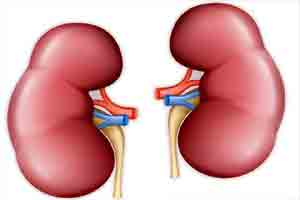- Home
- Editorial
- News
- Practice Guidelines
- Anesthesiology Guidelines
- Cancer Guidelines
- Cardiac Sciences Guidelines
- Critical Care Guidelines
- Dentistry Guidelines
- Dermatology Guidelines
- Diabetes and Endo Guidelines
- Diagnostics Guidelines
- ENT Guidelines
- Featured Practice Guidelines
- Gastroenterology Guidelines
- Geriatrics Guidelines
- Medicine Guidelines
- Nephrology Guidelines
- Neurosciences Guidelines
- Obs and Gynae Guidelines
- Ophthalmology Guidelines
- Orthopaedics Guidelines
- Paediatrics Guidelines
- Psychiatry Guidelines
- Pulmonology Guidelines
- Radiology Guidelines
- Surgery Guidelines
- Urology Guidelines
How to revive a Fistula advice to kidney patients undergoing dialysis

Gurgaon : For those who have suffered a kidney failure, dialysis provides a new lease of life. During dialysis, the blood from a patient's body is taken to a machine, cleaned and returned. The machine functions as an artificial kidney and the process of dialysis generally takes about four hours.
The most popular way of doing dialysis is through the AV Fistula, where an artery, particularly in the forearm, is connected to a vein. After the fistula is created, the patient goes through hemo-dialysis, where the blood is removed from the body through a needle and returned through another needle after cleaning. In other words, the Fistula functions as a life-line for patients.
The dialysis has to ensure that the amount of blood cleaned during the hemo-dialysis is up to the required volume. To enable this, the vascular access should allow continuous high volumes of blood flow. There are occasions when the Fistula may fail to do so. To prevent this, one has to take proper care of the Fistula.
How to ensure that this does not happen? Or, what steps can one take when it does happen. Firstly, as soon as a Fistula is made, the patient should be advised to visit the vascular/interventional radiology department of the hospital to have a check. This is done through Ultrasound Doppler to examine how the Fistula is functioning and maturing.
Patients should also go for a regular check of the Fistula by Doppler when they are on maintenance hemo-dialysis Pre- and post-operative evaluation of the upper extremity veins and arteries with duplex ultrasound is an useful adjunct to physical examination to help the Fistula to keep functioning efficiently.
The role that duplex ultrasound plays as part of a surveillance programme is very valuable, as this modality allows identification and localization of abnormalities which may potentially threaten access function and patency. Identification and correction of access abnormalities at early stages definitely improves longevity and function of the Fistula.
Understanding the information gained through Doppler evaluation is a complex problem. It should be performed by an expert who generally treats the problem. Timely action by an endovascular specialist would help in saving the Fistula.
Endovascular non-surgical treatment-a form of minimally invasive surgery which accesses many regions of the body via major blood vessels, when a endovascular specialist introduces a catheter percutaneously into a large blood vessel helps in saving the failing Fistula. It can be performed through percutaneous non-surgical procedures like Fistulogram, Fistuloplasty, stenting and thrombolysis.
A 'failing Fistula' can be revived through these procedures.
Failing Fistula normally has the following symptoms
i) Difficulty in placing needles during dialysis; .
ii) Thrombus or clot aspiration during dialysis;
iii) Elevated venous pressure, greater than 200 mm.Hg on a 3q00 cc/min pump.
iv) Elevated re-circulation time of 15% or greater; v. Low urea reduction rate of less than 60%; vi Collapse of the Fistula suggesting poor arterial inflow;
vii) Poorly matured Fistula;
viii)Loss of thrill;
ix) Distal limb pain and
x) Swelling around the fistula. Narrowing may occur at any sites along the length of the fistula.
Doppler surveillance and endovascular salvage of the fistula is practiced routinely in Western countries, but it is still in its formative stage in India. A kidney patient needs to be aware of the problems and the solutions, which are available in the country.
Dr Virender Sheorain, has undergone training in vascular endovascular procedures, and has established such service in Medanta Medicity Hospital in Gurgaon.

Disclaimer: This site is primarily intended for healthcare professionals. Any content/information on this website does not replace the advice of medical and/or health professionals and should not be construed as medical/diagnostic advice/endorsement or prescription. Use of this site is subject to our terms of use, privacy policy, advertisement policy. © 2020 Minerva Medical Treatment Pvt Ltd